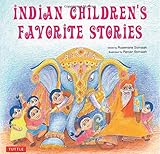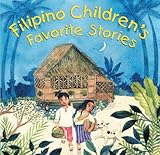Lesson 1: Identifying Universal Themes Across Cultures
Lesson Plan
Indian Children's Favourite Stories

- Learning Goal
- Identify the universal theme of a story.
- Compare and contrast stories with the same universal theme.
- Duration
- Approximately 90 minutes
- Necessary Materials
-
Provided: Direct Teaching Example Chart, Guided Practice Example Chart, Independent Practice Worksheet
Not Provided: Indian Children’s Favorite Stories retold by Rosemarie Somaiah, Filipino Children’s Favorite Stories retold by Liana Romulo, chart paper, markers
-
Teacher Modeling

will review with students that the theme of a story is the message the author is trying to convey about life. I will explain that universal themes are themes that are relevant to all people and cultures, such as love, friendship, family, society, and nature. Universal themes are the topics of the message that the author is trying to convey. For example, if the theme of The Three Little Pigs is that “hard work now will pay off later”, then the universal theme would be “hard work”. Stories in different cultures may have different details but the themes are similar across cultures. I will explain that by looking at the problem and solution in the story (plot), we can identify the author’s message or the theme of the story. By thinking about the theme, we can identify the universal theme (or topic). I will read “Munna and the Grain of Rice” (p. 8) aloud, from Indian Children’s Favorite Stories retold by Rosemarie Somaiah. I will chart the problem, solution, and theme of the story. (Direct Teaching Teacher Example Chart is provided below in Teacher and Student Materials.) I will model identifying the universal theme in the story based on the plot and author’s message (or theme). Since the story is about how a young girl tricks her greedy king and the theme is that kindness wins over greed, I think the universal theme is “greed”. Greed exists everywhere and in all cultures and stories may be told with different details and in different ways but there are many stories in the world with the universal theme of “greed”. For example, this story reminds me of another story that I know with the universal theme of “greed.” In A Christmas Carol, Scrooge is very greedy and learns that kindness leads to a happier life. The universal theme of that story is also greed. The details of the story and even the author’s message or theme are slightly different, but the universal theme of “greed” is the same.
TIP: If your students are not familiar with A Christmas Carol by Charles Dickens, you may choose to read this story to students or find a more familiar story with the universal theme of “greed” to use as an example in the Direct Teaching.
-
Think Check
Ask: These are two very different stories, but I just said they’re both about “greed.” How is that possible? How did I figure out that BOTH stories shared the universal theme of “greed”? Students should be able to explain that you first identified the problem and solution for each story. You then identified the author's message or the theme of each story, using the problem and solution. Students should be able to explain that even though the stories are different, you used clues from the problem and solution to figure out that they were both about greed.
TIP: Students struggling with identifying universal themes may need more support in identifying the author’s message or theme of a story first. The third grade Theme Unit is a good resource for teaching the author’s message or theme.
-
Guided Practice

will read “A Feast of Gold” (p. 37) from Filipino Children’s Favorite Stories retold by Liana Romulo. We will identify the problem and solution in the story and use these to identify the author’s message or the theme of the story. We will then identify the universal theme of the story. (Guided Practice Teacher Example Chart is provided below.) We will compare and contrast this story to the story of “Munna and the Grain of Rice”. For example: Both stories share the universal theme of “greed”, but in “A Feast of Gold”, the greed destroys the main characters. In “Munna and the Grain of Rice” Munna is clever and kind enough to trick the greedy king and save the people from starvation. The author’s message is somewhat different in the two stories but the universal theme of “greed” is the same.
-
Independent Practice

will read “The Magic Lake” (p. 50) from Filipino Children’s Favorite Stories retold by Liana Romulo. You will identify the problem, solution, and theme (author’s message) of the story. You will then identify the universal theme and compare and contrast this story to “A Feast of Gold”. (Student Independent Practice is provided below.)
Texts & Materials
Standards Alignment
(To see all of the ReadWorks lessons aligned to your standards, click here.)





lesson plan resources are simple and useful . looking at the lesson plans has helped understand some terms I used to struggle with some time ago .
Thanks
This website help to make teaching feels like a normal job. It gives me back so much time to spend with my family
Great resource and lesson 2 works well with MLK Holiday approaching! Thanks
very detailed and comprehensive
In addition to RL4.6, this lesson seems very well correlated to RL4.2: Determine the theme of a story drama, or poem from details in the text; summarize the text. Thank you for great lessons.
AWESOME
I love these resources and how they are aligned to Common Core Standards.
just found this site!! Can't wait to use it!!
Love this website! such a blessing to teaching
These resources are awesome!!! This site is my #1 spot when creating my lessons. Thanks SOOOOOOOOOOOOOOOOOOOOOO much!!!!!
LOVE this site!!